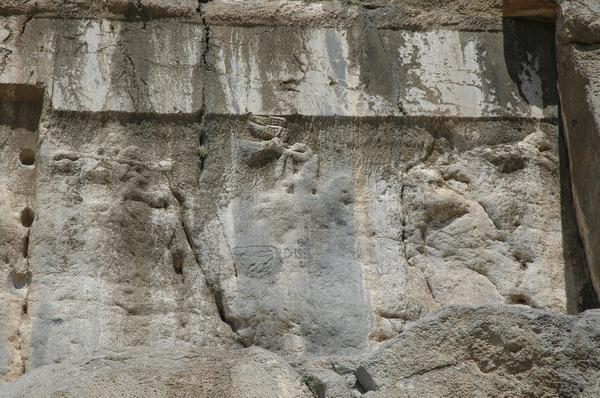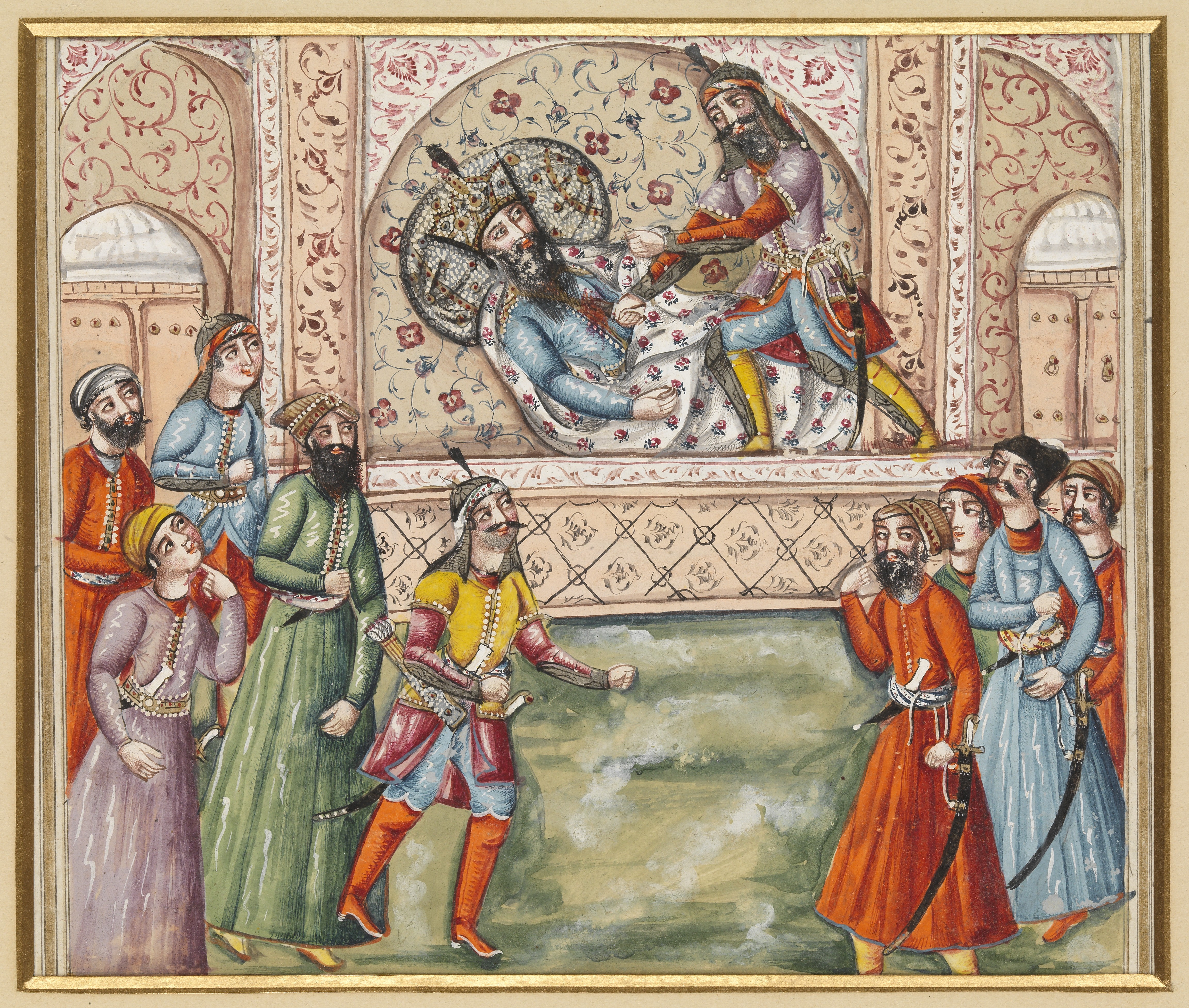|
Bizhan (Shahnameh)
Bizhan or Bijan ( fa, بیژن) is one of the main Iranian heroes in the Shahnameh, the national epic of Greater Iran. Bizhan is son of Giv (Shahnameh), Giv and Banu Goshasp and grandson of Goudarz and Rostam. Although he appears in almost all stories in the heroic age of Shahnameh, he has a significant role in the story of Bizhan and Manizhe, where he fell in love with Manizhe, the daughter of Afrasiab, the king of Turan and longtime enemy of Greater Iran, Iran. Beside Shahnameh, he has been celebrated in other epics such as Faramarznameh. Another epic poem named Bizhannameh is dedicated to his adventures. It consists of almost 1,900 verses. It has been suggested that Bizhan is a Parthian Empire, Parthian figure. Vizhan is the name of the grandson of Gotarzes I and the grandfather of Gotarzes II. According to Nöldeke, noble Parthian families who were guardians of Iranian national epics, later attributed some of the exploits of the ancient heroes to their own ancestors. Family t ... [...More Info...] [...Related Items...] OR: [Wikipedia] [Google] [Baidu] |
Bizhan (The Shahnama Of Shah Tahmasp)
Bijan (also Bizhan or Bejan; fa, بیژن) is a Persian given name meaning "Hero". People named Bijan include: *Bijan (designer), surname Pakzad, a fashion and perfume designer *Bijan Abdolkarimi, philosopher *Bijan Beg Saakadze, Safavid noble and officeholder *Bijan Beg (son of Rostam Khan), Safavid official *Bijan Daneshmand, actor *Bizhan Emkanian, Bijan Emkanian, actor *Bijan Jalali, poet *Bijan Jazani, intellectual *Bijan Kamkar, musician *Bijan Kian, businessman involved in American politics, notably associated with the administration of Donald Trump *Bijan Mortazavi, violinist and singer *Bijan Namdar Zangeneh, politician *Bijan Robinson (born 2002), American football player *Bijan Nobaveh-Vatan, politician In literature *Bijan, a character in ''Bijan and Manijeh'', a love story in the Persian epic poem Shahnameh {{given name Persian masculine given names ... [...More Info...] [...Related Items...] OR: [Wikipedia] [Google] [Baidu] |
Turan
Turan ( ae, Tūiriiānəm, pal, Tūrān; fa, توران, Turân, , "The Land of Tur") is a historical region in Central Asia. The term is of Iranian origin and may refer to a particular prehistoric human settlement, a historic geographical region, or a culture. The original Turanians were an Iranian tribe of the Avestan age. Overview In ancient Iranian mythology, Tūr or Turaj (''Tuzh'' in Middle Persian) is the son of the emperor Fereydun. According to the account in the ''Shahnameh'', the nomadic tribes who inhabited these lands were ruled by Tūr. In that sense, the Turanians could be members of two Iranian peoples both descending from Fereydun, but with different geographical domains and often at war with each other. Turan, therefore, comprised five areas: the Kopet Dag region, the Atrek valley, parts of Bactria, Sogdia and Margiana. A later association of the original Turanians with Turkic peoples is based primarily on the subsequent Turkification of Central Asia, in ... [...More Info...] [...Related Items...] OR: [Wikipedia] [Google] [Baidu] |
Gotarzes II
Gotarzes II ( xpr, 𐭂𐭅𐭕𐭓𐭆 ''Gōtarz'') was king of the Parthian Empire from 40 to 51. He was an adopted son of Artabanus II. When his father died in 40, his brother Vardanes I was to succeed to the throne. However, the throne was seized by Gotarzes II. Gotarzes II eventually was able to gain control of most of Parthia forcing Vardanes to flee to Bactria. With the death of Vardanes in c. 46, Gotarzes II ruled the Parthian Empire until his death. Gotarzes II was succeeded by his uncle Vonones II. Origins Little is known of the early life of Gotarzes II prior to his becoming King of Parthia. Although Gotarzes II was a son of Artabanus II, it is unknown whether he was a biological or adoptive son. Josephus calls Gotarzes II the brother of Vologases I. Tacitus, on the other hand, does not explicitly describe Gotarzes II as a son of Artabanus II. However, he refers to him as a Parthian usurper who was responsible for the murder of his brother, Artabanus, and his famil ... [...More Info...] [...Related Items...] OR: [Wikipedia] [Google] [Baidu] |
Gotarzes I
Gotarzes I ( xpr, 𐭂𐭅𐭕𐭓𐭆 ''Gōdarz'') was king of the Parthian Empire from 91 BC to 87 or 80 BC. He was the son and successor of Mithridates II (), and was succeeded by his son Orodes I. Name "Gotarzes" is from Middle Iranian ''Gōdarz'' (), itself from the Old Iranian ''*Gau-tarza-'' (literally "Ox-crusher"). Reign Coins, reliefs and Babylonian astronomical diaries label Gotarzes as the son and heir of Mithridates II (). According to a heavily damaged relief at Behistun, Gotarzes had served as "satrap of satraps" under his father. After the death of his father, Gotarzes was proclaimed king at Babylon. At his accession, Gotarzes appointed Mitratu as the general of Babylonia. Gotarzes continued his father's policy by using their vassal, the Artaxiad king of Armenia, Tigranes the Great (), as their representative in their efforts to extend their influence to Syria and Cappadocia. In 87/6 or 83 BC, Tigranes had seized Syria and Cilicia. Gotarzes' had several wive ... [...More Info...] [...Related Items...] OR: [Wikipedia] [Google] [Baidu] |
Parthian Empire
The Parthian Empire (), also known as the Arsacid Empire (), was a major Iranian political and cultural power in ancient Iran from 247 BC to 224 AD. Its latter name comes from its founder, Arsaces I, who led the Parni tribe in conquering the region of Parthia in Iran's northeast, then a satrapy (province) under Andragoras, who was rebelling against the Seleucid Empire. Mithridates I (r. c. 171–132 BC) greatly expanded the empire by seizing Media and Mesopotamia from the Seleucids. At its height, the Parthian Empire stretched from the northern reaches of the Euphrates, in what is now central-eastern Turkey, to present-day Afghanistan and western Pakistan. The empire, located on the Silk Road trade route between the Roman Empire in the Mediterranean Basin and the Han dynasty of China, became a center of trade and commerce. The Parthians largely adopted the art, architecture, religious beliefs, and royal insignia of their culturally heterogene ... [...More Info...] [...Related Items...] OR: [Wikipedia] [Google] [Baidu] |
Bizhannameh
BĪŽAN-NAMA ( fa, بیژن نامه) is a Persian epic poem of ca. 1,900 couplets relating the adventures of the legendary hero Bīžan son of Giv.William Hanaway, Jr., "BĪŽAN-NAMA" in Encyclopaedia Iranica.accessed February 2011 Zabiollah Safa, an Iranian literary scholars notes that a large number verses of thies epic were taken from the Bīžan and Manīža in Ferdowsī’s Šāh-nāma. Jalal Matini after closely postulated that the epic is mainly a copy of Ferdowsī’s story with some verses added by the author and some of Ferdowsi Abul-Qâsem Ferdowsi Tusi ( fa, ; 940 – 1019/1025 CE), also Firdawsi or Ferdowsi (), was a Persians, Persian poet and the author of ''Shahnameh'' ("Book of Kings"), which is one of the world's longest epic poetry, epic poems created by a sin ...’s omitted. References {{reflist Persian mythology Poems in Persian Epic poems in Persian ... [...More Info...] [...Related Items...] OR: [Wikipedia] [Google] [Baidu] |
Faramarznameh
''Faramarz-nama'' or ''Faramarz-nameh'' ( fa, فرامرزنامه, italic=yes) is a Persian epic recounting the adventures of the hero Faramarz"FARĀMARZ-NĀMA" in Encyclopedia Iranica by Djalal Khaleghi-Motlagh. Accessed April 4, 2010/ref> who is the son of Rustam. Manuscripts The history book ''Tarikh-i Sistan'' (history of Sistan) mentions an account of Faramarz (akhbar-e Faramarz) in twelve volumes, but this work, which was likely in prose, has been lost. Instead, two Faramarz-namas (epic of Faramarz), both in the form of epic poems, are extant. First manuscript The first manuscript, which appears to be older, is written by an anonymous poet who introduces himself as an admirer of Ferdowsi and is dated between the mid-11th and 12th centuries. In the manuscript he introduces himself as a villager from Piruzabad (or possibly an orthographical error in the text for Forsabad, a town near Marv in Khorasan). The poet states that he composed the Faramarz-nama at the age of thirt ... [...More Info...] [...Related Items...] OR: [Wikipedia] [Google] [Baidu] |
Afrasiab
Afrasiab ( fa, ''afrāsiyāb''; ae, Fraŋrasyan; Middle-Persian: ''Frāsiyāv, Frāsiyāk'') is the name of the mythical king and hero of Turan. He is the main antagonist of the Persian epic Shahnameh, written by Ferdowsi. The mythical king and hero According to the ''Shahnameh'' (''Book of Kings''), by the Persian epic poet Ferdowsi, Afrasiab was the king and hero of Turan and an archenemy of Iran. In Iranian mythology, Afrasiab is considered by far the most prominent of all Turanian kings; he is a formidable warrior, a skilful general, and an agent of Ahriman, who is endowed with magical powers of deception to destroy Iranian civilization.Yarshater, E., "Afrasiab", ''Encyclopædia Iranica'' - digital library; accessed January 18, 2007. He is brother to Garsivaz, and the son of Pashang. According to Islamic sources, Afrasiab was a descendant of Tūr (Avestan: ''Tūriya-''), one of the three sons of the Iranian mythical King Fereydun (the other two sons being Salm and Iraj) ... [...More Info...] [...Related Items...] OR: [Wikipedia] [Google] [Baidu] |
Shahnameh
The ''Shahnameh'' or ''Shahnama'' ( fa, شاهنامه, Šāhnāme, lit=The Book of Kings, ) is a long epic poem written by the Persian poet Ferdowsi between c. 977 and 1010 CE and is the national epic of Greater Iran. Consisting of some 50,000 "distichs" or couplets (two-line verses), the ''Shahnameh'' is one of the world's longest epic poems. It tells mainly the mythical and to some extent the historical past of the Persian Empire from the creation of the world until the Muslim conquest in the seventh century. Iran, Azerbaijan, Afghanistan, Tajikistan and the greater region influenced by Persian culture such as Armenia, Dagestan, Georgia, Turkey, Turkmenistan and Uzbekistan celebrate this national epic. The work is of central importance in Persian culture and Persian language, regarded as a literary masterpiece, and definitive of the ethno-national cultural identity of Iran. It is also important to the contemporary adherents of Zoroastrianism, in that it traces the historical ... [...More Info...] [...Related Items...] OR: [Wikipedia] [Google] [Baidu] |
Bizhan And Manizhe
''Bijan and Manijeh'' (also ''Bizhan and Manizheh'', Persian بيژن و منيژه - ''Bīžan ow Manīža'') is a love story in Ferdowsi's Shahnameh. Bijan was the son of Giv, a famous Iranian knight during the reign of Kay Khosrow, the Shah of Iran, and Banu Goshasp, the heroine daughter of Rostam. Bijan falls in love with Manijeh, the daughter of Afrasiab, the king of Turan and the greatest enemy of Iran. The tale of his suffering and Manijeh’s constancy has been quoted by several others. The tragedy of Bijan and Manijeh People from Armenia complain to Kay Khosrow, the Shah of Iran, that wild boars are invading their fields. Bijan fights the boars, forcing them back to their lairs. The day after, Gorgin, an Iranian knight who had accompanied Bijan on the quest, describes the beautiful gardens of Afrasiab to Bijan, tempting him to cross the border from Iran into the mythical land of Turan on the northern shores of the Caspian Sea. Turan is ruled over by the evil and e ... [...More Info...] [...Related Items...] OR: [Wikipedia] [Google] [Baidu] |
Rostam
use both this parameter and , birth_date to display the person's date of birth, date of death, and age at death) --> , death_place = Kabulistan , death_cause = With the conspiracy of his half-brother Shaghad, he fell into a well full of poisoned spears and was killed in Kabulistan. , body_discovered = , resting_place = , resting_place_coordinates = , burial_place = , burial_coordinates = , monuments = , nationality = , other_names = RustamRustem , siglum = , citizenship = , education = , alma_mater = , occupation = , years_active = , era = , employer = , organization = , agent = , known_for = Seven Labours Battle with Sohrab Battle with Esfandiyārkilling Demons , notable_works = , style = , net_worth = , height = , television = , ... [...More Info...] [...Related Items...] OR: [Wikipedia] [Google] [Baidu] |
.png)


%2C_Nisa_mint.jpg)


.png)